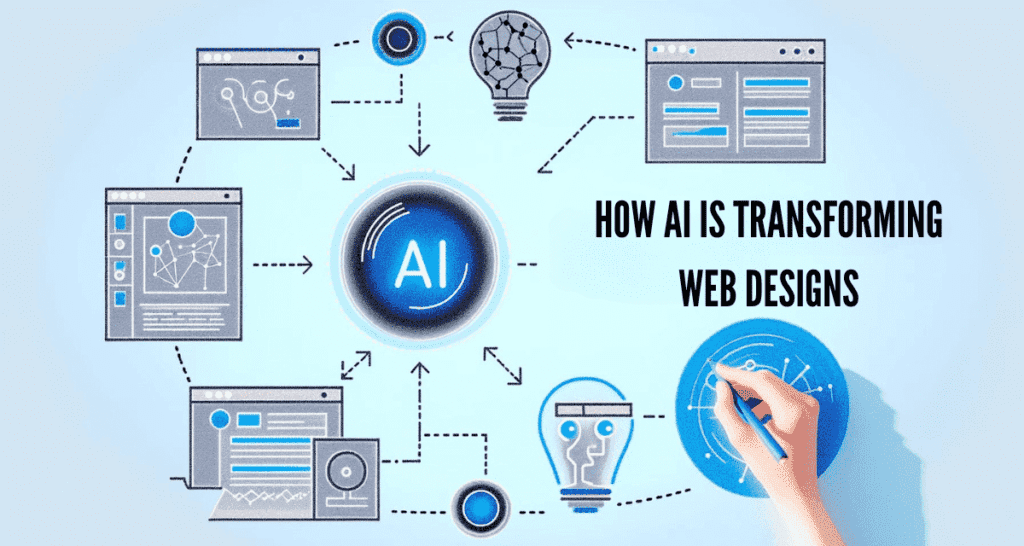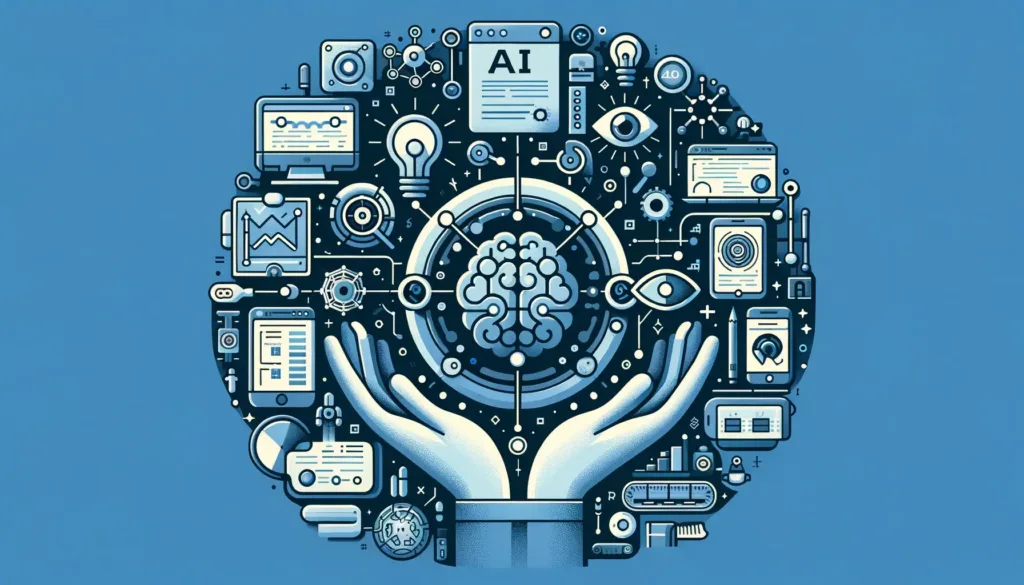Introduction
Artificial Intelligence (AI) is revolutionizing the way we interact with technology, and its impact on web design is profound. By integrating AI, web designers can create more personalized, engaging, and efficient websites. This article explores how AI is reshaping the landscape of web design, making it important for both aspiring and seasoned designers to understand and embrace its capabilities.
Understanding AI in Web Design
What is AI?
Artificial Intelligence refers to the simulation of human intelligence in machines programmed to think and learn. In web design, AI can automate tasks, optimize user experiences, and offer insights that drive creative decisions.
The Evolution of AI in Web Design
AI’s role in web design has evolved from simple automated responses to complex algorithms capable of driving significant design choices. The adoption of machine learning and neural networks has enabled websites to adapt dynamically to user behavior, enhancing both functionality and aesthetic appeal.
Key Concepts of AI in Web Design
Machine Learning: AI systems learn from data to improve their performance over time without being explicitly programmed.
Neural Networks: These are AI architectures that mimic the human brain’s structure and function, crucial for processing complex datasets in web design.
How AI is Transforming Web Design

Automated Web Design Tools
AI-powered tools like Adobe Sensei and Wix ADI are changing the game in web design by automating complex processes. These tools can analyze content and user behavior to suggest and implement design elements automatically, significantly reducing the time and effort required for creating and testing web layouts.
Personalization and User Experience (UX)
AI excels in creating personalized user experiences. By analyzing data on user behavior, AI algorithms can create website interfaces to individual preferences. This customization improves user engagement and satisfaction, as websites appear more intuitive and responsive to individual needs.
AI in User Interface (UI) Design
In UI design, AI can automatically adjust layouts and content to suit different devices and usage contexts, ensuring optimal usability and aesthetics. Dynamic UI adjustments based on real-time data are becoming a standard practice, thanks to AI.
Benefits of AI in Web Design
Increased Efficiency and Speed
AI significantly cuts down the time it takes to design websites. Tools like Adobe Sensei automate routine design tasks, allowing designers to focus on more creative aspects. This efficiency not only speeds up the design process but also reduces costs.
Enhanced Creativity Through Data-Driven Insights
AI provides designers with insights based on large amounts of data. These insights can inspire new design ideas that are both innovative and effective. Websites like Behance often showcase examples of creative web designs enhanced by AI.
Improved User Engagement
Personalization is key in today’s digital landscape. AI helps create web experiences tailored to the individual user. This personal touch increases user engagement, as demonstrated by platforms like Amazon, where AI recommendations keep users browsing longer.
Challenges and Considerations
Ethical Considerations in AI
The integration of AI into web design raises important ethical questions, particularly concerning privacy and data security. Designers must ensure that AI systems respect user privacy by securely handling personal data. Organizations like Electronic Frontier Foundation provide guidelines on maintaining digital privacy.
Balancing Automation and Human Creativity
While AI can automate many aspects of web design, it’s crucial to maintain a balance where human creativity is not stifled. Designers should leverage AI as a tool to enhance their creative output rather than replace it. This balance ensures that designs remain personal and human-centric.
The Learning Curve and Resource Investment
Implementing AI requires an initial investment in learning and technology. Designers must be willing to invest time and resources to understand AI technologies fully. Resources like Coursera offer courses that can help web designers get up to speed with AI.
AI in Web Design: Case Studies
Successful Implementations of AI in Web Design
Several leading companies have successfully incorporated AI into their web design processes, demonstrating significant improvements in user engagement and operational efficiency:
Airbnb: Airbnb uses AI to enhance its search and recommendation systems, making it easier for users to find the perfect rental. Their investment in AI-driven features has improved user satisfaction and booking rates.
Netflix: Netflix employs AI to personalize user experiences by recommending shows and movies based on individual viewing habits. This approach has notably increased viewer engagement and subscription retention.
Analysis of AI Improvements
These case studies show that AI can effectively personalize user experiences, leading to increased engagement and customer satisfaction. By analyzing user data, AI helps make content and recommendations, making websites more intuitive and user-friendly.
Future Trends Influenced by AI
The success of AI in these instances also points to future trends in web design, such as increased personalization, automated content creation, and more intelligent user interfaces. These advancements suggest a future where AI is integral to all phases of web design and development.
Tools and Technologies for Integrating AI in Web Design

Leading AI Tools and Software in Web Design
Several tools and technologies have become essential for designers looking to integrate AI into their workflows:
Adobe Sensei: Powers intelligent features across all Adobe products, enhancing creative workflows and automating tasks.
Wix ADI (Artificial Design Intelligence): Automatically creates unique websites from scratch, tailored to the user’s needs based on their answers to a few simple questions.
Tips for Choosing the Right AI Tools
When selecting AI tools for web design, consider the following:
Specific Needs: Match the tool to your specific design needs. For example, if personalization is a priority, choose a tool known for its data analysis capabilities.
Ease of Use: Opt for tools that integrate seamlessly into your existing workflow and are easy to use, ensuring a smooth transition and quick adoption.
Emerging Technologies on the Horizon
The future of AI in web design looks promising with emerging technologies such as:
AI-driven analytics tools: These will provide deeper insights into user behavior, enabling even more personalized design decisions.
Voice-driven design: As voice interaction becomes more common, AI tools that can design for voice interactions will become indispensable.
Preparing for the Future of AI in Web Design
Skills Web Designers Need to Develop
To stay relevant in a field increasingly influenced by AI, web designers must develop certain skills:
Technical Proficiency: Understanding AI concepts and how they apply to web design is crucial. Learning programming languages like JavaScript and Python can also be beneficial.
Data Analysis: The ability to interpret and use data effectively will allow designers to make informed decisions based on user behavior and preferences.
Importance of Staying Updated with AI Advancements
The landscape of AI and technology evolves rapidly. Staying informed about the latest developments in AI tools and technologies is essential for:
Keeping your skills relevant.
Ensuring your designs meet current standards and utilize the best available technologies.
Balancing AI and Human Elements in Design
As AI becomes more prevalent, maintaining a balance between automated solutions and human creativity is vital. This balance ensures that designs retain a personal touch and connect effectively with users.
The Essential Role of Human Intervention in AI Content Creation, By this you will get to know what points to consider while balancing out thing by yourself.
Conclusion
Reflecting on AI’s Impact in Web Design
The journey through the role of artificial intelligence in web design highlights a transformative era for this field. AI not only optimizes and automates processes but also opens new avenues for personalization and creativity, providing a competitive edge to those who embrace it.
Embracing AI in Web Design
For web designers, embracing AI is no longer an option but a necessity to stay relevant and innovative. The integration of AI in web design not only enhances user engagement but also streamlines the design process, making it more efficient and effective.
Final Thoughts
As we move forward, the role of AI in web design will continue to grow, influencing how we interact with digital environments. By staying informed and adaptable, web designers can utilize AI to create more engaging, responsive, and personalized websites that stand out in the digital landscape.
Author

Olivia, our Design Professional , crafts digital landscapes that captivate and resonate. With an artistic flair and a penchant for user experience, he turns visions into visually stunning, user-friendly websites.
View all posts







